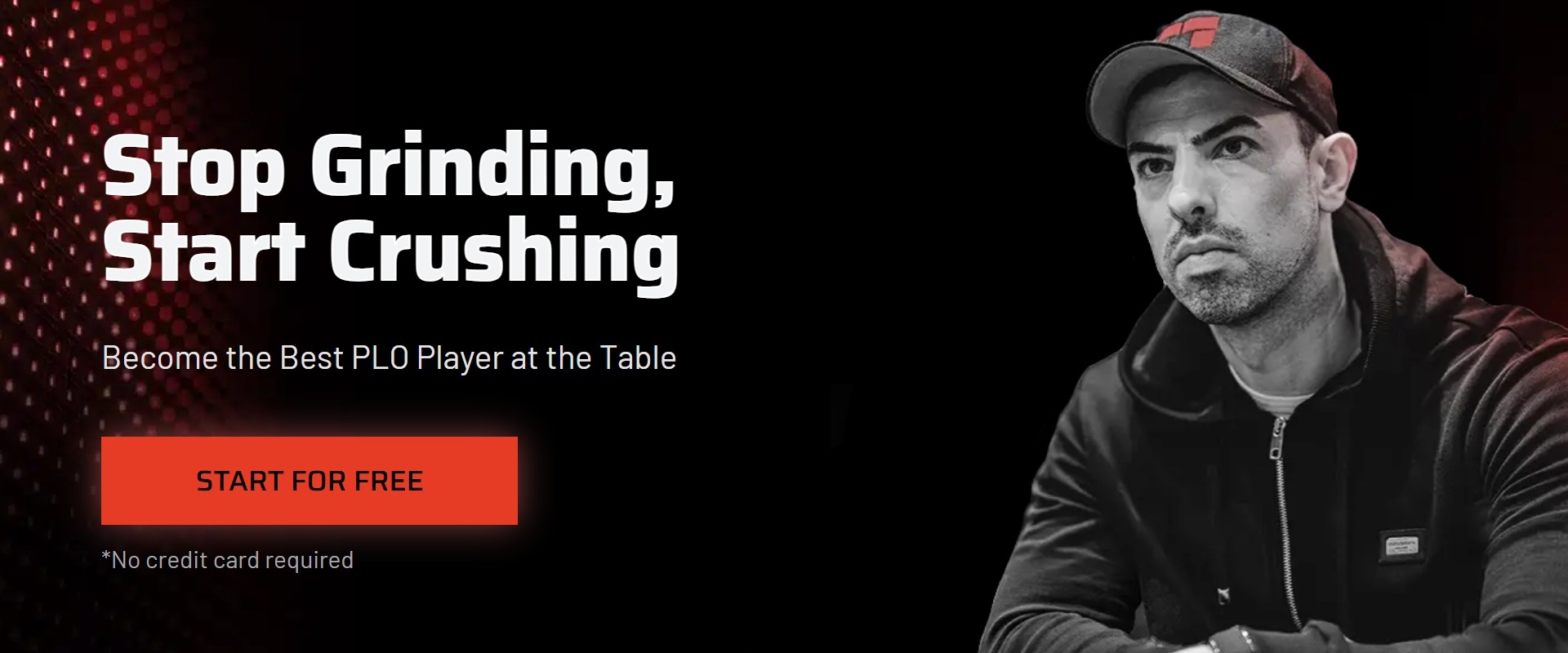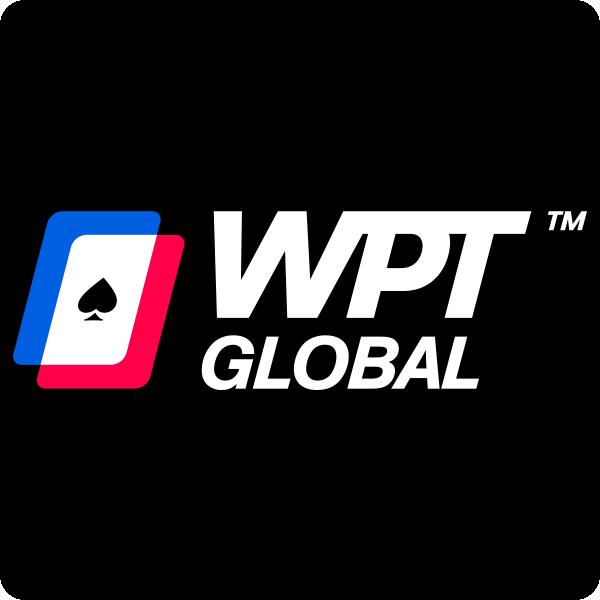PLO Betting Rules Made Simple: From Rookie to Confident Player
Pot Limit Omaha ranks as the second most-played poker game. Understanding PLO betting rules is essential for everyone who wants to become a winner.
Some experts believe PLO will surpass Texas Hold’em. The game starts with small and big blinds that rotate each turn. PLO betting differs significantly from Hold’em with its pot-limit structure. Bet sizing becomes more complex. Players must adapt to this unique Pot Limit Omaha betting structure. PLO games offer more action and profit potential than Texas Hold’em.
Learn about all key differences between PLO and Texas Hold’em.
Many rookies struggle with calculating pot-sized bets. They also struggle with understanding when to apply pressure and when to fold. Mastering Pot Limit Omaha betting rules transforms confused beginners into confident competitors.
This guide breaks down Pot Limit Omaha betting rules systematically. It covers basic calculations through advanced strategies. Whether you’re transitioning from Hold’em or starting fresh, these fundamentals build the perfect PLO betting foundation.
Find the best PLO action and rakeback deals here:
WPT Global
Free Tournament tickets up to $480
Free Casino Coin up to $100
30% Rakeback
Network: Independent
Phenom Poker
up to 35% Rakeback
Soft Action
Network: Independent
Juicy Stakes Poker
36% Rakeback
Spin & Gos with up to 12,000x your Buy-in
Network: Horizon Poker
Champion Poker
Network: iPoker
Understanding PLO Betting Rules
Pot Limit Omaha betting operates under fundamental constraints that separate it from Texas Hold’em. Pot Limit Omaha follows specific rules that shape strategic decisions.
What makes PLO betting different from Hold’em
PLO and Hold’em differ primarily in their betting structures. Hold’em allows players to bet their entire stack anytime. PLO restricts betting to the current pot size. This creates a more calculated betting approach.
Hand equities in PLO run much closer than Hold’em. Strong starting hands rarely exceed 65% equity against a single opponent. Hold’em advantages can surpass 80%.
Why pot-limit matters in Omaha
- Pot-limit betting creates balanced gameplay through several mechanisms:
- Prevents excessive pre-flop all-ins
- Preserves strategic depth of post-flop play
Emphasizes implied odds and draws - Allows skilled players to extract value through subtle play
PLO becomes more about post-flop maneuvering than forcing opponents out.
How to train your PLO betting techniques
Training forms the foundation for mastering PLO betting techniques. Proper resources and structured learning develop the skills needed to excel at Pot Limit Omaha betting rules.
Find a PLO training site
Several specialized platforms offer PLO training. PLO Mastermind stands out with its PLO Trainer and hundreds of Poker training videos for 4-card, 5-card PLO and 6-card PLO. The platform provides instantly accessible pre-solved solutions for various formats:
- 6-max formats
- 8-max formats
- Cashgames
- MTTs
- Heads-up
The platform offers high-accuracy PLO scenarios. Players can break down ranges and train in a risk-free environment with real-time feedback.
Study PLO training videos
Video content represents one of the most accessible training methods. Passive viewing yields limited benefits. To maximize learning:
- Select videos aligned with your specific needs rather than watching randomly
- Actively engage by taking notes and jotting down questions
- Reinforce learning through practice tools after watching
This approach transforms passive consumption into active learning. It builds practical skills. Many platforms update their video libraries weekly. Topics range from basic preflop hand selection to advanced concepts like equity realization.

How to Calculate Pot-Sized Bets
Calculating pot-sized bets accurately forms the backbone of successful PLO strategy. Pot Limit Omaha betting requires players to master specific mathematical formulas.
The pot-limit formula explained
The fundamental PLO betting formula consists of three components. Current pot size, last bet made, and amount needed to call. To calculate a pot-sized bet, add these three amounts together. First, you must call the previous bet. Then that amount becomes part of the pot for calculating maximum raise size. This creates a natural ceiling that prevents extremely large bets.
Common preflop calculation examples
Preflop calculations follow consistent patterns. In a $1/$2 game as first player to act, maximum bet is $7. This equals pot of $3 plus $2 big blind plus $2 to call. Someone raises to $7 and action reaches the button. They could raise to $24 total. Calculate as $10 (current pot) + $7 (last bet) + $7 (amount to call) = $24. Using the 3x rule: (3 × $7) + $3 = $24.
Postflop pot calculation walkthrough
Postflop calculations become more intricate due to larger pots. Preflop action creates a $51 pot. First player to act postflop can bet up to $51 maximum. They bet $51 and opponent wants to raise. Maximum would be $204, derived from ($51 × 3) + $51 = $204. This demonstrates how quickly PLO pots escalate.
Common mistakes in Pot Limit Omaha betting
Many players incorrectly calculate pot sizes by forgetting to include their call amount. Another frequent error involves miscounting the pot size before the latest bet. Players sometimes forget that when raising from the blinds, the calculation differs slightly. Part of your money is already in the pot. Remember that saying “pot” in live games commits you to making that bet. Ask “how much is the pot” instead if you just want information.
PLO Betting rules explained: Step-by-step
Each betting round in Pot Limit Omaha presents unique strategic opportunities. Understanding how to navigate these rounds effectively separates skilled players from beginners.
Preflop: First decisions and pot math
Preflop play in PLO differs substantially from Hold’em. Equities run much closer together. Open limping occurs more frequently in PLO because:
- Isolation attempts are less successful
- Players often justify loose calls hoping to flop lucky
- Standard preflop raise size is typically pot-sized
Position affects optimal sizing. Players in position might consider smaller 3-bet sizes (2.5x-3x the open). This maintains a larger stack-to-pot ratio (SPR) and capitalizes on positional advantage.
Flop: Building the pot
The flop represents a critical juncture where hand assessment revolves around texture. Board texture determines how coordinated the community cards are. It also shows their likelihood of connecting with opponents’ ranges.
Multi-way pots create danger. Flops completing straight draws or flushes become exceptionally dangerous. Continuation betting requires careful consideration of:
- Number of opponents
- Board texture
- Whether you were the preflop aggressor
Building the pot early with strong hands or draws is essential. This allows for larger bets on subsequent streets.
Turn: Pot control and pressure
Turn play often involves difficult decisions about applying pressure versus exercising pot control. When checking back the turn, players “cap” their range. This significantly impacts river strategy.
On paired turns, the specific card that paired matters greatly. Top card pairing favors the out-of-position player. Bottom card pairing benefits the in-position player. Position becomes increasingly valuable as players must assess whether to protect checking ranges.
River: Final bets and value extraction
River betting requires shifting from equity-based thinking to individual cards and blockers. Value betting optimally often means reducing sizes to between half and three-quarters pot. This extracts more value by giving opponents better prices.
River check-raising represents another powerful tool. Opponents often bet marginal hands when checked to, assuming weakness. Forcing mistakes in these spots separates skilled PLO players from weaker ones.
Ready to play? Check out our rakeback deals and the best PLO sites:
WPT Global
Free Tournament tickets up to $480
Free Casino Coin up to $100
30% Rakeback
Network: Independent
Phenom Poker
up to 35% Rakeback
Soft Action
Network: Independent
Juicy Stakes Poker
36% Rakeback
Spin & Gos with up to 12,000x your Buy-in
Network: Horizon Poker
Champion Poker
Network: iPoker
Advanced PLO betting techniques
Advanced PLO betting techniques separate skilled players from beginners. These strategies extract maximum value while minimizing losses.
Pot control
Pot control keeps pots small with medium-strength hands. This technique works best with showdown value hands. These hands aren’t strong enough to bet for value. They remain too strong to fold.
Players often check back turns with overpairs or second pair. This avoids building large pots with marginal holdings. The strategy becomes crucial in deep-stacked games. Set-over-set scenarios create devastating reverse implied odds.
Underbetting
Small bets of 20-33% pot size serve multiple purposes. These undersized bets extract thin value from weaker hands. They give opponents poor bluff-raising odds.
They work especially well when your range becomes depolarized. This happens after checking the turn. Cost-effective bluffs targeting missed draws become possible.
Using Blocker Bets
Blocker bets are small river bets (typically 20-30% of pot). Players make them from out of position. This prevents larger bets from opponents.
Holding key “blocker” cards creates powerful bluffing opportunities. The ace of hearts on a three-heart board works perfectly. Opponents cannot have the nut flush. Straight blockers work similarly. Multiple queens on a J-T-9 board reduce nut straight likelihood.
Polarized Betting ranges
Polarized ranges contain very strong hands and bluffs. Medium-strength hands get excluded. This approach forces opponents into difficult decisions against large bets. Calling becomes profitable only with strong holdings.
Polarized strategies appear in 3-betting preflop scenarios. They also work in reraising postflop situations. Medium hands prefer pot control options.
Exploiting Opponents
Successful exploitation requires identifying specific weaknesses in opponents’ strategies. Against tight players, well-timed bluffs force folds. Target decent-but-not-premium hands.
Value betting aggressively exploits passive players. These opponents call too liberally. PLO’s complex dynamics make psychological adjustments crucial. Varying bet sizes prevents predictability. Table image manipulation creates profitable opportunities against observant opponents.
Want to dig deeper into these topics to increase your winrate? Go over to PLOMastermind, the best Pot Limit Omaha coaching site worldwide:

Online vs. Live PLO betting
The transition between online and live PLO environments requires strategic adjustments. Each format offers distinct advantages and challenges that shape optimal betting approaches.
Advantages of Online Pot Limit Omaha
Online PLO offers substantial economic benefits compared to live play. Lower rake percentages coupled with no dealer tips significantly increase profitability. Players experience approximately 100 hands per hour online versus 30 hands per hour live. Multi-table ability further amplifies this efficiency. Skilled players can multiply their hourly earnings despite potentially inducing more errors.
Adjusting PLO betting structures for online play
Online platforms necessitate faster decision-making and strategic adaptations. Tracking software and HUDs provide detailed insights into opponents’ tendencies. This creates opportunities for data-driven decisions. Disciplined bankroll management becomes even more critical as online swings can be sharper. The high volume of hands played typically pushes variance toward skilled players over time.
Advantages of Live PLO
Live games typically feature looser action and more passive players. Live PLO tends to resemble micro-stakes online play. Recreational players make obvious mistakes. Physical tells and interpersonal dynamics offer valuable information unavailable in digital formats. Live games often include straddles and deeper stacks. Players frequently sit with 300+ big blinds.
Adjusting Pot Limit Omaha betting structures for live play
Live PLO demands exceptional patience given its slower pace. The betting environment differs markedly as players frequently overlook obvious mistakes. Tight play focusing on nutted hands proves highly effective given the multiway nature of most pots. Proper stack management becomes crucial. Games often play much higher than their stated limits due to straddles and gamblers willing to put substantial money in action.
Common mistakes in Online and Live PLO
Players commonly fail to adjust between formats. Online players moving to live settings often struggle with interpersonal dynamics and slower pace. Live players transitioning online may find the faster tempo overwhelming. Miscalculating pot sizes remains a prevalent error in both environments. Understanding the fundamental differences in player tendencies—aggressive online versus passive live play—remains essential for successfully navigating both arenas.
Live and Online Pot Limit Omaha Betting Tips
Proper betting execution in PLO requires mastering specific mechanics. These mechanics vary between live and online environments. Knowing how to correctly declare bets improves your gameplay experience.
How to declare a pot bet in live games
Saying “pot” in live PLO commits you to making that bet. This isn’t a question about pot size. It’s a binding declaration.
Dealers at most casinos calculate the bet amount when you announce “pot.” This standardized procedure applies across live poker rooms and casinos.
To avoid accidentally committing to a bet:
- Ask “how much is the pot” when seeking information
- Use specific phrasing that doesn’t commit chips
- Wait for the dealer’s response before deciding
Using pot buttons in online poker
The best Pot Limit Omaha sites streamline betting through dedicated interface elements. Most poker sites feature a “pot” button. This button automatically calculates the correct amount when clicked.
This functionality eliminates mental math requirements. Players focus entirely on strategic decisions. Automated calculation ensures accuracy and maintains game flow. Online PLO betting becomes more accessible for beginners.
Live games require mental calculations or dealer assistance. Online platforms handle all mathematical aspects instantly.
WPT Global
Free Tournament tickets up to $480
Free Casino Coin up to $100
30% Rakeback
Network: Independent
Phenom Poker
up to 35% Rakeback
Soft Action
Network: Independent
Juicy Stakes Poker
36% Rakeback
Spin & Gos with up to 12,000x your Buy-in
Network: Horizon Poker
Champion Poker
Network: iPoker
When to ask the dealer for help
Pot limit games represent the only poker format where dealers inform players about pot sizes. Skilled dealers maintain a running count to facilitate faster gameplay.
When confused about calculations:
- Ask the dealer for assistance. This is acceptable and expected
- Dealers provide accurate information about current pot sizes
- They also calculate maximum possible raises when requested
Veteran players at the table might offer information before the dealer. This is acceptable etiquette when you aren’t involved in the hand.
Proper betting execution improves overall game flow. It prevents potentially costly mistakes in PLO betting.
Common PLO betting mistakes and how to avoid them
Successful PLO play requires avoiding several common mistakes. These pitfalls trap newcomers to the game frequently. Mistakes severely impact profitability even when players understand basic Pot Limit Omaha betting rules.
Overvaluing weak hands
Players transitioning from Texas Hold’em overvalue certain hand types. Many overvalue disconnected high pocket pairs like K-K and Q-Q. These hands are premium in Hold’em but vulnerable in PLO. Single pairs and two pairs rarely win at showdown. Equity differences between strong and weak hands are smaller than Texas Hold’em. Weak hands lack potential to make nuts on multiple streets. They frequently become dominated by stronger hands.
Learn about all key differences between PLO and Texas Hold’em.
Miscounting pot size
Even experienced players occasionally miscalculate PLO pot sizes. A common error involves forgetting to include your call amount. Players determine the maximum raise incorrectly. Another frequent mistake occurs when players miscount the pot size. This happens before the latest bet. Saying “pot” commits you to making that specific bet in live games. Always ask “how much is the pot” if seeking information. This avoids committing chips accidentally.
Forgetting to use two hole cards
The most fundamental PLO betting rules mistakes involve misunderstanding the two-card requirement. Players must use exactly two cards from their hand. Combine these with three community cards. Newcomers sometimes think they can use one or three hole cards. This mirrors Hold’em incorrectly. Holding one club doesn’t give you a flush. You need two clubs in your hand even with four clubs on board.
Ignoring position in betting decisions
Position is more crucial in PLO than in Hold’em. Playing in position leads to winning bigger pots while losing smaller ones. Checking strong hands planning to check-raise becomes dangerous when out of position. Opponents often take free cards. Many hands playable in position become easy folds when out of position. Always consider your position before entering pots. Use raises to eliminate players acting after you when necessary.
PLO tournament betting strategies
Tournament Pot Limit Omaha requires adapting betting strategies as blinds increase. Stack depths change constantly. Unlike cash games, tournaments demand flexible approaches throughout different stages.
Early Stage PLO betting strategies in mtts
Early stages feature deeper stacks relative to blinds. This presents opportunities to accumulate chips.
Players should prioritize:
- Connected cards with nut draw potential
- Playing more hands in position
- Avoiding marginal spots out-of-position
Limping becomes viable in tournaments. It minimizes variance while seeing flops against weaker opponents.
Do you want to learn more about PLO betting strategies in multi-table tournaments? Head over to PLOMastermind to find out how to become the last man standing.

Middle stage PLO betting strategies
Antes kick in and late registration ends. Middle stages require balanced aggression. Target tight players’ blinds. Pot-sized blinds plus antes become worth stealing.
Defend blinds appropriately. Consider three-betting the first blind steal attempt. Medium stacks must avoid risking large percentages with marginal holdings.
Late Stage PLO betting strategies
Blinds become substantial. Short-stacked play focuses on getting chips in with premium hands. Strong rundowns also work effectively.
The limp-reraise becomes particularly effective with:
- Quality aces
- Double-suited rundowns
Very short stacks (3-4BB) should seek multi-way pots. Reasonable hands hope for “protection” from post-flop action.
Betting too aggressively
ICM considerations affect PLO tournaments significantly. Hand equities run closer together than Hold’em events. Pot-limit structure prevents raising more than pot size.
You can only pot-bet. The worst odds you give opponents is 2-to-1. This often leaves money behind for post-flop play.
Failing to adjust to opponents
Successful PLO tournament play requires continuous opponent observation. Take notes even when not involved in hands. Adjust accordingly.
Play tight against loose players. Play loose against tight ones. Attack short/medium stacked weak-tight opponents as blinds increase.
Misreading board textures
PLO tournament players frequently overvalue hands preflop and postflop. Former Hold’em players particularly struggle. They overvalue disconnected high pocket pairs. They continue with overpairs, top pairs, and two pairs too often.
Avoid bluffing without fold equity. Tournaments see fewer folds than cash games. This applies particularly with medium stacks.
WPT Global
Free Tournament tickets up to $480
Free Casino Coin up to $100
30% Rakeback
Network: Independent
Phenom Poker
up to 35% Rakeback
Soft Action
Network: Independent
Juicy Stakes Poker
36% Rakeback
Spin & Gos with up to 12,000x your Buy-in
Network: Horizon Poker
Champion Poker
Network: iPoker
Conclusion
Mastering Pot Limit Omaha betting rules transforms confused beginners into confident competitors. PLO offers exciting profit opportunities when players grasp its unique pot-limit structure. The mathematical formulas become second nature with practice. Shortcuts like the 3x rule speed up calculations.
Players who understand these fundamentals gain significant advantages:
- Position awareness for optimal betting decisions
- Board texture reading for strategic adjustments
Appropriate bet sizing across all streets - Advanced techniques like pot control and polarized ranges
Each betting round requires specific approaches. Tight preflop play builds foundations. Calculated flop aggression builds pots. Strategic turn decisions control variance. Value-focused river bets extract maximum profit.
Tournament PLO demands flexibility as blinds increase and stack depths change. Players must adjust strategies throughout early, middle, and late stages. ICM considerations become crucial in tournament settings.
Avoiding common mistakes remains essential for PLO success:
- Don’t overvalue weak hands like disconnected pairs
- Calculate pot sizes accurately including call amounts
- Always use exactly two hole cards
- Respect position in all betting decisions
The journey from PLO rookie to skilled player requires dedication and practice. Players who commit to understanding these betting rules make better decisions. They exploit opponents’ weaknesses more effectively. Success at PLO tables follows naturally.
Whether playing online or live, cash games or tournaments, these fundamentals provide the foundation. Master the basics first. Add advanced techniques gradually. Your bankroll will thank you.
Key Takeaways
Master PLO’s unique betting structure to transform from confused beginner to confident competitor in this increasingly popular poker variant.
- Master the pot-limit formula: Maximum bet equals current pot + last bet + call amount, or use the “3x rule” shortcut for quick calculations
- Position is crucial in PLO: Play more hands in position while avoiding marginal spots out-of-position, as equity differences are smaller than Hold’em
- Avoid common rookie mistakes: Don’t overvalue weak hands like single pairs, always use exactly two hole cards, and never miscalculate pot sizes
- Adapt strategies by betting round: Play tight preflop, build pots on favorable flops, exercise pot control on turns, and focus on value extraction on rivers
- Leverage advanced techniques: Use pot control with medium hands, strategic overbets with polarized ranges, and blocker bets to maximize profits
PLO’s pot-limit structure creates more strategic depth than Hold’em, requiring players to think beyond simple all-in decisions. Success comes from understanding mathematical calculations, reading board textures accurately, and adjusting to opponents’ tendencies across different formats and tournament stages.
FAQs
In PLO, the maximum bet allowed is equal to the current pot size. Players must calculate the pot size, which includes all previous bets and calls, to determine the maximum bet amount. This pot-limit structure creates a more strategic and calculated approach to betting compared to No-Limit Hold’em.
For beginners, it’s crucial to be patient with starting hand selection, avoid overvaluing single pairs (even aces), and focus on drawing to the nuts. PLO involves less bluffing than Hold’em, so players should adapt their thinking and avoid playing too many hands, especially from out of position.
Position is extremely important in PLO, even more so than in Hold’em. Playing in position allows you to win bigger pots and lose smaller ones. It’s advisable to play more hands in position and be more selective when out of position. Always consider your position before entering a pot.
Common mistakes include overvaluing weak hands, miscalculating pot sizes, forgetting to use exactly two hole cards, and ignoring position in betting decisions. Players should also avoid betting too aggressively without considering pot odds and be cautious of misreading board textures.
PLO tournaments require adapting strategies as blinds increase and stack depths change. Early stages allow for deeper stack play, while middle and late stages demand more aggression and consideration of ICM implications. Tournament play often involves shallower stacks and less post-flop action compared to cash games, requiring different betting approaches throughout the stages.





